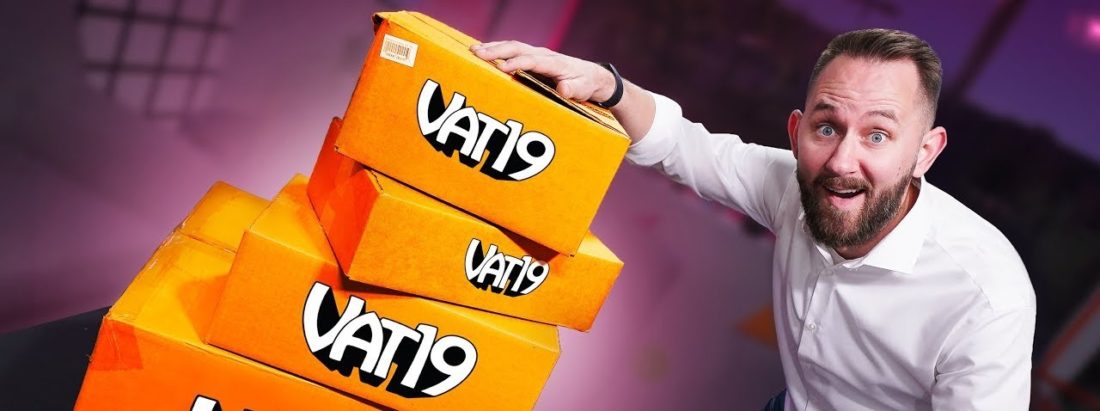Influencer marketing has been surging in popularity over the past half decade, growing by roughly 50% every year since 2016.
While the Covid-19 pandemic has led some brands to cut budgets—most notably in the travel and hospitality sectors—other types of companies such as entertainment and delivery brands have increased spend recently, and the influencer market is projected to grow to more than $9 billion this year.
Despite this immense spend, many of today’s influencer campaigns still come across as awkward and ineffective advertisements rather than as authentic and compelling endorsements. Often that’s because the efforts are simply transactional rather than true brand-influencer collaborations.
What’s so great about collaboration? And what does effective partnership look like?
To help, here are five examples of highly-successful brand-influencer collaborations, as well as key lessons marketers can learn from each.
1. Liquid-Plumr + Vat19: Create Collaborations That Feel Natural
The collaboration: Popular YouTube creators Vat19 are known in part for their fun challenge videos, such as “Will It Blend? World’s Largest Gummy Bear.” So, when Liquid Plumr wanted to partner with an influencer to showcase how its product could tackle any type of drain blockage, there was a perfect spinoff opportunity: “Will It Clog?”
What marketers can learn: These videos performed so well (the one above garnered more than 6.1 million views) mainly because Vat19 were simply asked to do what was already in their wheelhouse. In other words, the collaboration felt natural for the influencers, for the brand, and—most importantly—for the audience.
2. Bassett Furniture + Jenni Holmes: Make Sure the Brand Fits the Influencer
The collaboration: Lifestyle influencer Jenni Holes of Dear Lillie Studio runs a decorating service based in Williamsburg, Virginia; she’s known for her sophisticated American aesthetic. In 2019, Bassett Furniture teamed up with her on a multi-media collaboration (Instagram Posts, Instagram Stories, blog posts) focused on highlighting the brand’s pieces as well as its factories in Newton, North Carolina, and Bassett, Virginia.
What brands can learn: The brand-influencer collaboration worked well because of the perfect fit between company and influencer. Bassett’s furniture matched Holes’ tastes well and the message the brand wanted to get across—that its pieces are American made—resonated with the audience, many of whom live in the same region as where the factories are located.
3. Dell + Douglas Karr & Mark Schaefer: Let the Experts Showcase Their Expertise
The collaboration: What’s sometimes overlooked is that influencer marketing can be powerful for B2B as well as B2C companies. A good example of this is Dell’s Luminaries podcast, in which two technology influencers—Douglas Karr and Mark Schaefer—interview IT experts about best practices and recent developments in the field.
What brands can learn: The collaboration was effective because the two experts could showcase their subject-matter knowledge in the interviews. That made the content feel authentic and valuable to the audience, rather than simply coming across as an advertisement.
4. Official Ojai Valley Taxidermy + Rhett & Link: Embrace the Differences
The collaboration: Another misconception about brand-influencer marketing is that it can only be undertaken by big brands with big budgets. In truth, the approach can be effective for firms of all sizes. For example, longtime friends Rhett and Link are now YouTube superstars, but when they were still growing their channel they often worked with small businesses to create content, such as this iconic advertisement for Ojai Valley Taxidermy in California.
What brands can learn: The video, which has more than 18 million views, is profoundly strange. And that’s exactly the point. The owners of Ojai Valley Taxidermy were willing to fully embrace the differences that make Rhett and Link’s content distinctive. By doing so they were rewarded with a piece that did not feel like a standard commercial.
5. Chipotle + David Dobrik: Turn to Those Who Know Social Platforms Best for Help
The collaboration: Influencer marketing has become intertwined with social media marketing in recent years, and with good reason. Increasingly these platforms are where creators shine, and they’re also where brands often need help in connecting with audiences. Case in point: In order to reach younger consumers on TikTok, Chipotle teamed up with a number of influencers—most notably David Dobrik—to create a lid flip challenge involving its takeout containers.
What brands can learn: The effort was a massive success: Hundreds of thousands of people created their own #ChipotleLidFlip TikTok videos, and the brand garnered more than 300 million views on these pieces.
Why was the challenge so popular? In part because Chipotle was savvy enough to know that it should turn to those who already understood TikTok well for help and let them create what they thought would work best on the platform.
Ultimately, the effort was also a success because it checked the other boxes of an effective collaboration: The content felt natural (the influencers had a history of taking part in TikTok challenges), the brand-influencer was a good fit (David Dobrik was already a public fan of Chipotle), the experts were empowered to showcase their skills (getting the perfect flip video was no easy task), and it felt different from typical advertising (the group challenge could never have been executed with a standard campaign).
Image via YouTube
